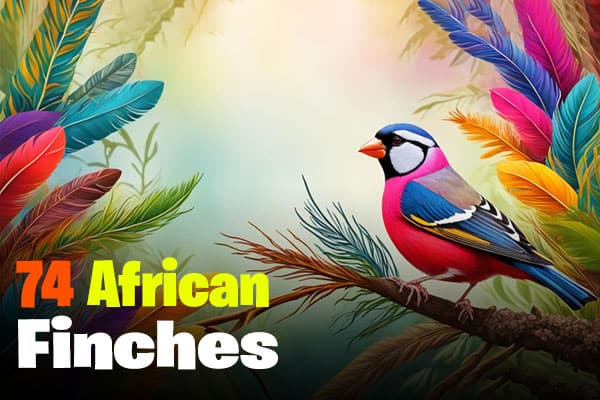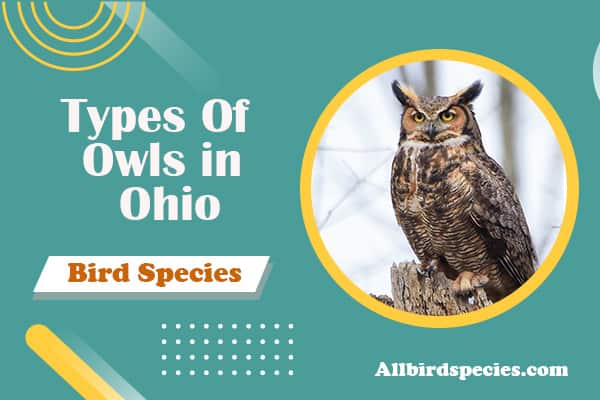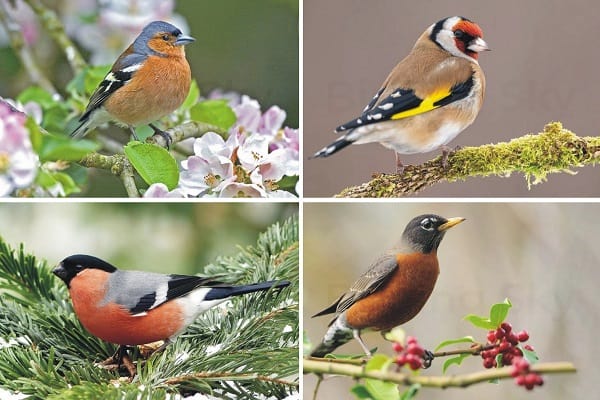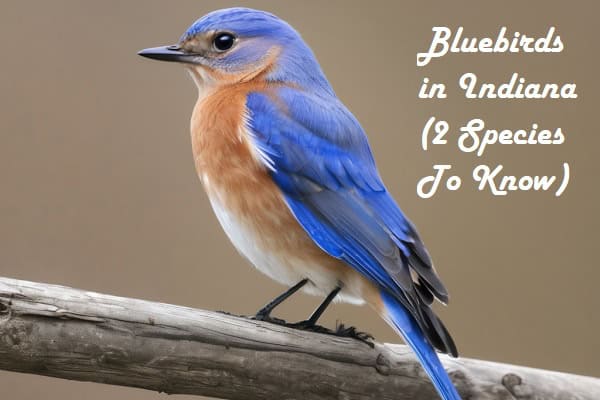African Finches: Colorful Companions for Bird Lovers
Are you drawn to the bright world of African finches? These small, colorful birds are part of the Estrildidae family. They live in Africa and have captured the hearts of bird lovers and experts alike. But what makes them special, and how can they bring joy to your life?
Introduction to African Finches
The Estrildidae family includes the African finches, a group of around 146 species. They are divided into about 34 genera. In Africa, there are 74 estrildid species across 25 genera. Each species shows a wide variety in looks, where they live, and how they act.
What Are African Finches?
African finches are known for their bright colors and patterns. They range from beautiful waxbills to eye-catching firefinches and twinspots. These small birds are loved by birdwatchers and keepers of birds for their unique traits and interesting social lives.
The Diversity of the Estrildidae Family
The Estrildidae family is famous for its variety of finches. They have a wide range of African finch species that live in different places across Africa. From the green rainforests to the dry savannas, these finch species have made their homes in many places. This shows how strong and adaptable the Estrildidae family is.
If you love birds or are just starting to learn about them, the African finches will surely catch your eye. They are a great example of the finch diversity in the Estrildidae family.
The Genus Amadina
In the world of African finches, the genus Amadina is quite special. It includes the Cut-throat Finch (Amadina fasciata) and the Red-headed Finch (Amadina erythrocephala). These finches are known for their unique looks and bright colors.
Cut-throat Finch (Amadina fasciata)
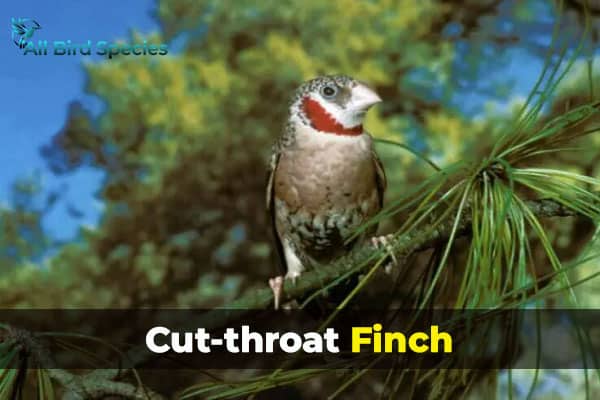
The Cut-throat Finch gets its name from the red band on the male’s throat. They have grey-brown feathers, black bars, and a unique pattern. The chestnut-brown belly and blackish-brown tail make them even more beautiful.
Red-headed Finch (Amadina erythrocephala)

The Red-headed Finch is known for its bright red head. The male’s head is a deep crimson color. The female has a grey head instead of red. Her feathers are similar but not as striking.
Both finches live in different parts of Africa. They show how diverse the Amadina genus is. These finches are a joy for anyone who loves birds and nature.
The Genus Amandava
The genus Amandava is known for its vibrant and captivating birds. The Orange-breasted Waxbill (Amandava subflava) is a prime example of this beauty.
Orange-breasted Waxbill
The Orange-breasted Waxbill stands out with its bright plumage. It has yellow to orange underparts and a red rump, eyes, bill, and eyebrow stripe. These features create a stunning contrast with its olive-green upper parts and flanks.
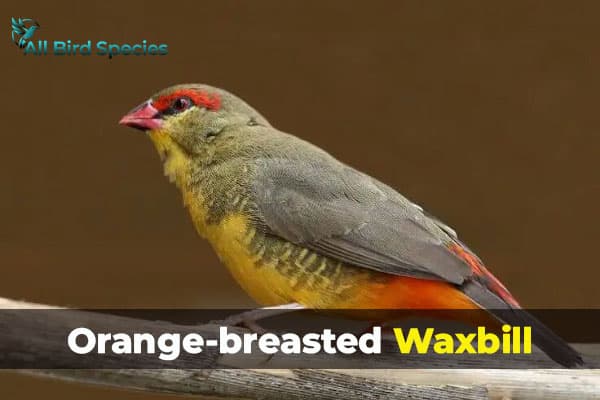
The females of this species are less colorful than the males. They still have a unique look that adds to their charm.
This finch lives in many parts of Africa. It can be found in the south, east, center, and west. This shows how adaptable and resilient the Orange-breasted Waxbill is.
The Orange-breasted Waxbill is known for its bright colors and engaging presence. It shows the beauty and variety of the Amandava finch genus. It delights bird lovers and nature enthusiasts everywhere.
The Genus Brunhilda
The African finches are vibrant, and the genus Brunhilda stands out with two amazing species. The Black-cheeked Waxbill (Brunhilda charmosyna) and the Black-faced Waxbill (Brunhilda erythronotos) are from eastern and southern Africa. They show the amazing variety in the bird world.
Black-cheeked Waxbill (Brunhilda charmosyna)

The Black-cheeked Waxbill is a gem of the Brunhilda genus. It has a grey back, head, throat, and chest with black bars on its wings. Its face and upper tail are black, which looks great with its red rump, flanks, and belly.
The female Brunhilda charmosyna looks different from the male, which makes it even more interesting.
Black-faced Waxbill (Brunhilda erythronotos)
The Black-faced Waxbill is another great bird in the Brunhilda genus. It has a grey head with a black mask, a grey back, throat, and chest, and a blue-black bill. Its red rump, flanks, and belly are very bright, making it stand out.

The Black-cheeked Waxbill and the Black-faced Waxbill show how diverse and beautiful the Brunhilda genus is. They give us a peek into the rich world of African finches.
Genus Clytospiza
The genus Clytospiza is a highlight in the African finch world. It includes the Brown Twinspot, a small bird that catches the eye. Its unique looks and plumage make it special.
Brown Twinspot (Clytospiza monteiri)
The Brown Twinspot has dark brownish-green feathers on top, a dark beak, and a grey head. It also has a red rump and underparts with rufous cinnamon spots in white. The male has a red patch on its throat, while the female has a white one.
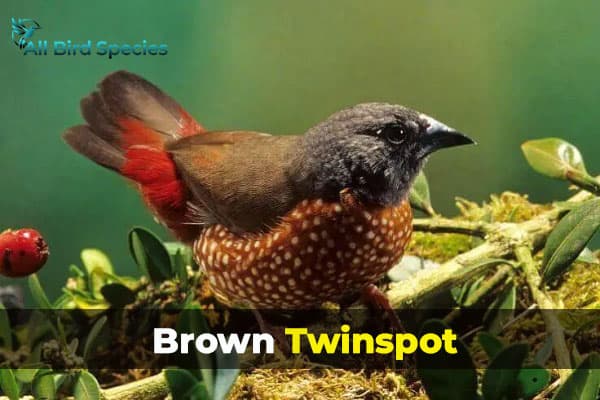
This finch lives in central Africa. It shows how diverse the Clytospiza genus is.
The Twinspot plumage of the Brown Twinspot is amazing. Its colors and patterns are a wonder. The Clytospiza finch is a favorite among bird lovers for its looks and behavior.
The Brown Twinspot is a highlight of the Genus Clytospiza. It shows how vibrant and diverse African finches can be.
African Finches: Colorful Gems of the Genus Coccopygia
The world of African finches is full of vibrant and diverse birds. The genus Coccopygia includes three waxbill species that show off nature’s beauty. These Coccopygia finches are special, each with a unique and eye-catching waxbill plumage.

The Angola Waxbill (Coccopygia bocagei) stands out with its olive-green back and wings. It has fine dark grey bars, a dark grey head, a red and black bill, a yellow belly, and more.
The Swee Waxbill (Coccopygia melanotis) is just as captivating. It has a grey head, olive-green back and wings, and a red lower back and rump.

The Yellow-bellied Waxbill (Coccopygia quartinia) also adds to the beauty of African finches. It has a golden yellow belly, an olive-green back, a black tail, a grey head, and a red and black beak.
These birds are found in different parts of Africa. They are a joy for bird lovers to see and learn about.
Exploring the Crimsonwing Finches of the Genus Cryptospiza
The Genus Cryptospiza is home to a group of finches known as the Cryptospiza finches. Each one is unique, with vibrant colors and detailed patterns. These finches live in eastern and central Africa, showing off their beauty in the wild.
Abyssinian Crimsonwing (Cryptospiza salvadorii)

The Abyssinian Crimsonwing has a deep crimson back and rump. Its head and underparts are olive-grey. This finch lives in the highlands of Ethiopia and eastern Africa, in dense forests.
Dusky Crimsonwing (Cryptospiza jacksoni)

The Dusky Crimsonwing has a dark grey head with a bright red face mask. Its underparts and back are dark grey, with a red back, flanks, and rump. It’s found in the highlands of central and eastern Africa.
Red-faced Crimsonwing (Cryptospiza reichenovii)
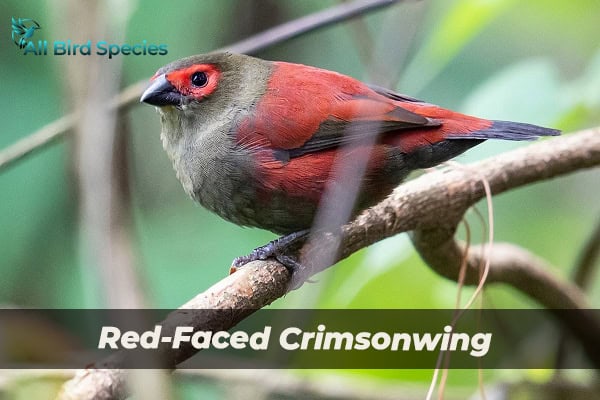
The Red-faced Crimsonwing has a mix of colors. Its red back, rump, and flanks stand out against its olive head and underparts. This finch lives in the montane forests of eastern and central Africa.
Shelley’s Crimsonwing (Cryptospiza shelleyi)
Shelley’s Crimsonwing is a standout with its red bill, back, and rump. It has orange flanks and olive-yellow underparts. Found in eastern Africa’s highlands, it’s a favorite among birdwatchers for its unique look.

These finches from the Genus Cryptospiza are truly remarkable. With their bright colors and detailed patterns, they show the amazing diversity of nature. Bird lovers and nature fans will find these crimsonwing finches truly captivating.
The Delicate Charm of the Genus Delacourella
The Genus Delacourella is known for its delicate charm and beauty. It includes the Grey-headed Oliveback (Delacourella capistrata), a finch that captures the essence of these birds.
The Grey-headed Oliveback is truly a sight to see. It has an olive back, wings, rump, and upper tail. Its yellow flanks stand out. The grey parts of its body contrast well with the white face and cheeks.
It also has a dark beak and a black bib on its throat. This adds to its unique look.
This finch lives in central and western Africa. It adds to the beauty of the Genus Delacourella. Its beautiful plumage and graceful moves are a joy to see.
The Grey-headed Oliveback is a standout among African finches. It shows the beauty of the Genus Delacourella. Its presence adds elegance and wonder to the bird world.
Unveiling the Genus Estrilda
The Genus Estrilda is a fascinating group within the African Estrilda finch family. It includes many beautiful waxbill species. Each member has its own unique look and traits.
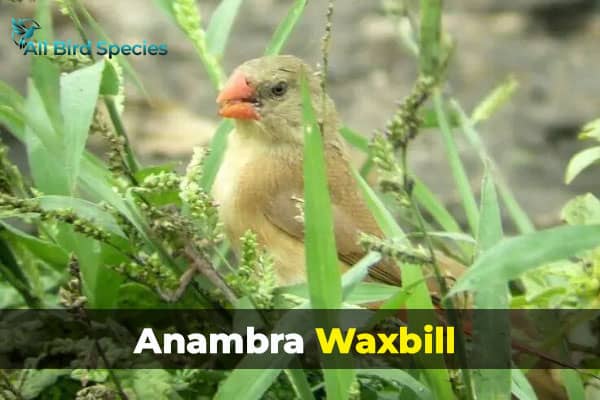
The Anambra Waxbill stands out with its bright red head and fine features. The Black-crowned Waxbill catches the eye with its black cap and gray body. The Black-headed Waxbill is known for its dark head and orange-red bill.
The Genus Estrilda shows the amazing variety and beauty in African finches. Species like the Black-lored Waxbill and the Black-rumped Waxbill are truly special. They each have their own unique look.

The Common Waxbill is a popular pet in this group. It has soft gray feathers and a bright red beak. The Crimson-rumped Waxbill is another must-see, known for its bold red rump and delicate look.
The Fawn-breasted Waxbill has a warm fawn breast and white face. Kandt’s Waxbill and the Orange-cheeked Waxbill also add to the group’s diversity. They are all part of the fascinating Genus Estrilda.
Whether you love birds or are just starting to learn about them, the Genus Estrilda will amaze you. Discover the beauty of these waxbill species and the African Estrilda finch family.
The Melodious African Silverbill
Get ready to be amazed by the soulful tunes of the African Silverbill (Euodice cantans). This bird is a star among Africa’s finch species. It’s known for its beautiful finch song that fills the air with music.
The African Silverbill has a unique silver-grey beak and a brown top. It also has dark wings, a dark rump and tail, a creamy belly, and a pale face. Its looks and singing skills make it a favorite among bird lovers.
This finch lives in western, central, and eastern Africa. It brings joy to birdwatchers and garden lovers alike. The Euodice finch will capture your heart with its beauty and song.
Twinspots: The Unique Gems of the Genus Euschistospiza
The twinspot finches of the Genus Euschistospiza are truly unique gems among African finches. They bring vibrant color and intrigue to the continent’s bird world. Their distinctive plumage makes them stand out.
The Dusky Twinspot (Euschistospiza cinereovinacea) has a dark overall look. It’s known for its red rump and white spots on its belly and flanks. On the other hand, Dybowski’s Twinspot (Euschistospiza dybowskii) has dark plumage with a grey head. It also has a red mantle, back, and rump, brown wings, and white spots on its belly.
Euschistospiza finches live in central and western Africa. They add to the diversity of the genus. Birdwatchers and nature lovers are drawn to their unique twinspot plumage.
The Genus Euschistospiza is a gem in the African finch family. It shows the amazing diversity and beauty in birds. From the Dusky Twinspot to Dybowski’s Twinspot, these finches show the wonders of nature. They bring joy to those who discover new and fascinating species.
Exploring the Genus Glaucestrilda
The Genus Glaucestrilda is a standout in the world of African finches. It includes the Cinderella Waxbill (Glaucestrilda thomensis), a finch species found on São Tomé. This island is off the western coast of Africa. The Genus Glaucestrilda is known for its unique mix of biogeography and diversity.
Cinderella Waxbill (Glaucestrilda thomensis)
The Cinderella Waxbill has a light grey body and bright red rump, belly, and vent. This mix of colors makes it look enchanting. It’s a favorite among bird lovers. The fact it lives on the remote island of São Tomé makes it even more special.
This finch’s delicate looks and bright waxbill plumage make it popular with bird experts and enthusiasts. Its Glaucestrilda finch traits and island life add to its charm. It’s a key reason why people are drawn to African finches.
The Cinderella Waxbill shows the beauty and uniqueness of the Genus Glaucestrilda. It highlights the need to protect these amazing African birds.
Keeping African Finches as Pets
African finches are loved for their bright colors, sweet songs, and fun behaviors. They make great pets for bird lovers. They bring joy and entertainment to any home.
To keep your African finches happy and healthy, make a good home for them. They can live in breeding cages or with other birds like canaries or budgies. A big, interesting space is important for their happiness.
For African finch pet care, it’s key to feed them well. They eat high-quality seeds, fresh fruits and veggies, and sometimes mealworms or insects. A balanced finch diet keeps them healthy and full of life.
It’s also important to take your finches to the vet regularly. Avian vets can give great advice, spot health problems, and help with treatments.
With the right finch aviary and care, you can enjoy these colorful birds for many years. They are truly delightful pets.
Frequently Asked Questions
Q1: What is the lifespan of an African finch?
African finches typically live for about 5 to 10 years in captivity.
Q2: What do finches eat?
Finches primarily eat seeds, but they also enjoy fresh greens, insects, and commercial finch seed mixes.
Q3: What age can finches breed?
Finches can start breeding as early as 6 to 9 months old, but it’s ideal to wait until they are closer to 1 year old for optimal health.
Q4: Do finches eat rice?
Yes, finches can eat rice, but it should be given in moderation as part of a balanced diet.
Q5: Do finches eat eggs?
Yes, finches may eat egg if it’s offered to them, especially during the breeding season as a source of extra protein.
*Recommended Articles*
- How Long Do Wood Pigeons Live?
- Are Birds Mammals? Exploring the Key Characteristics
- Top 13 Birds Of Mexico (With Stunning Photos)
- Top 10 Birds With Red Chests
- Top 7 Types of Woodpeckers in Ohio
Final Thoughts:
The world of African finches is a wonder for birdwatchers and nature lovers. They come in many colors and have unique behaviors. From the Waxbills and Crimsonwings to the Twinspots and Silverbills, each finch is a gem.
These finches are beautiful to watch in the wild or as pets. They bring joy and inspiration with their looks and actions. It’s important to protect these finches and their homes for the future.
We need to understand and value the African finch diversity. This helps us keep these birds and their homes safe. By caring for these finches, we help protect the ecosystems they live in.

